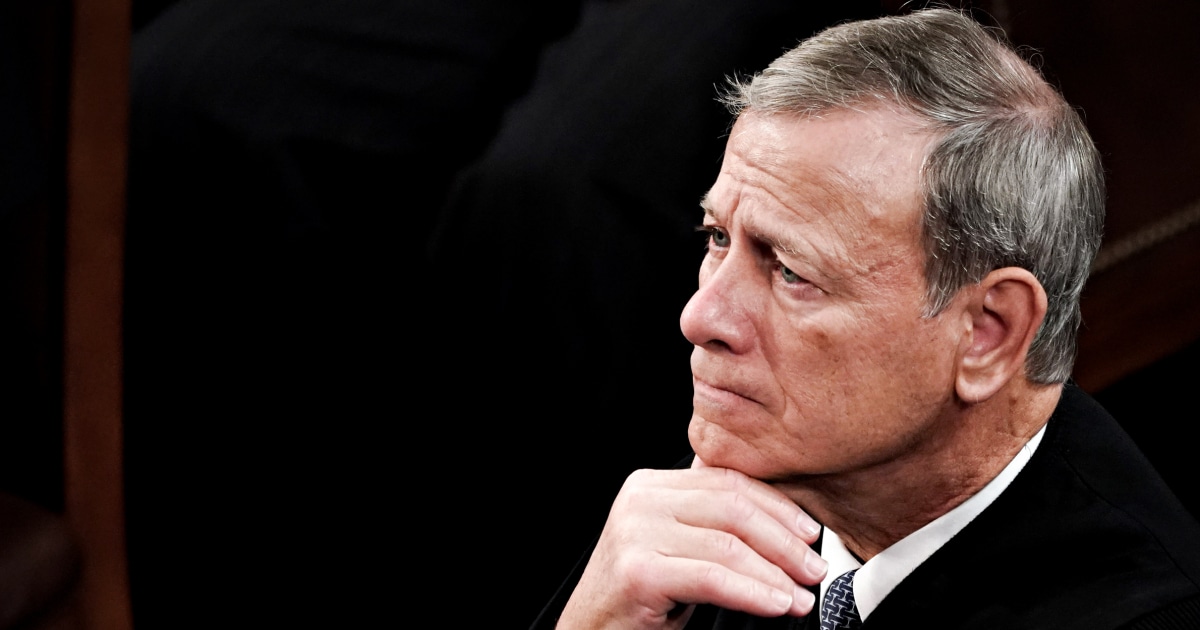Throughout the Donald Trump immunity litigation leading up to the Supreme Court’s ruling earlier this month, questions abounded over whether the court would step in to decide the issue, when it would do so, and how — including whether the court might achieve a unanimous opinion on presidential power as it had historically. When we finally saw the decision on July 1, we learned that the court was far from unanimous in Chief Justice John Roberts’ majority opinion granting Trump (and other former presidents) broad criminal immunity.
A new report sheds light on the court’s deliberations and Roberts’ further rightward shift, suggesting that a partisan divide on presidential immunity was seemingly inevitable under the chief justice’s leadership.
The report by CNN chief Supreme Court analyst and Roberts biographer Joan Biskupic, which hasn’t been confirmed by NBC News or MSNBC, recounted that sources familiar with the court’s deliberations said “there was an immediate and clear 6-3 split” in the case. Biskupic reported that Roberts “made no serious effort to entice the three liberal justices for even a modicum of the cross-ideological agreement that distinguished such presidential-powers cases in the past. He believed he could persuade people to look beyond Trump.” Roberts reportedly declined to respond to CNN’s questions about the recent term and this case.
To recap, the court could’ve taken up the immunity issue in December, when special counsel Jack Smith asked the justices to do so at an earlier stage of litigation in the federal election interference case. The court declined. After the federal appeals court ruled against Trump, the high court granted review of his appeal in February but didn’t schedule a hearing until the last argument day of the term in late April — in fact, the court scheduled a new last day for the immunity case. The July 1 ruling came on the final decision day of the term, months out from the presidential election whose outcome could lead to Trump crushing his federal cases if he wins.
It was a 6-3 ruling, with Republican appointees in the majority, though Trump appointee Amy Coney Barrett disagreed with part of Roberts’ opinion that curbed the use of official-act evidence to prove guilt of private conduct. That part of the ruling has called into question Trump’s New York state guilty verdicts, which weren’t at issue in his federal election interference appeal. President Joe Biden just called for a constitutional amendment — the “No One Is Above the Law Amendment” — to counteract the ruling.
So, what does Roberts’ handling of the immunity appeal tell us about him and his court? Biskupic wrote that the chief justice “appears to have abandoned his usual institutional concerns.” That’s one way to look at it.
Another is that his institutionalist reputation has long been overblown, at least when it comes to his rulings — which, to be sure, haven’t always represented the furthest right flank of the court, such as his concurring opinion in Dobbs, which wouldn’t have overturned Roe v. Wade; the other five Republican-appointed justices accomplished that without him. But that may say more about the fact that this far-right court doesn’t need Roberts’ vote to achieve its ends. The immunity episode, then, suggests that the chief justice is not only eager to be in on the court’s rightward march but wants to lead the way.
Subscribe to the Deadline: Legal Newsletter for updates and expert analysis on the top legal stories. The newsletter will return to its regular weekly schedule when the Supreme Court’s next term kicks off in October.


Leave a Reply